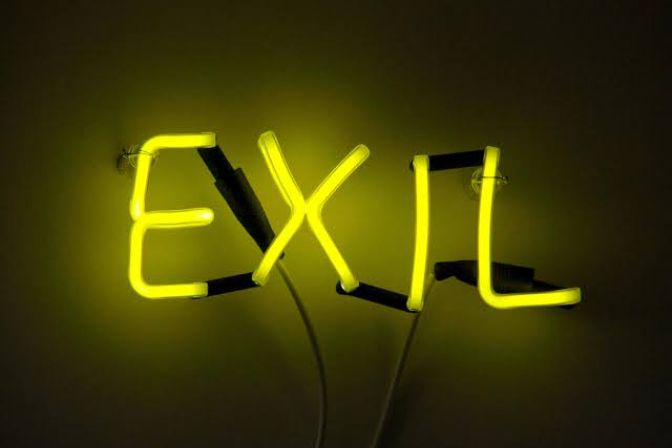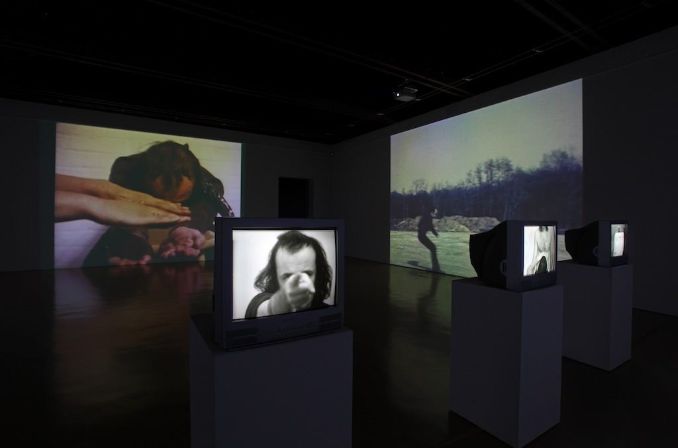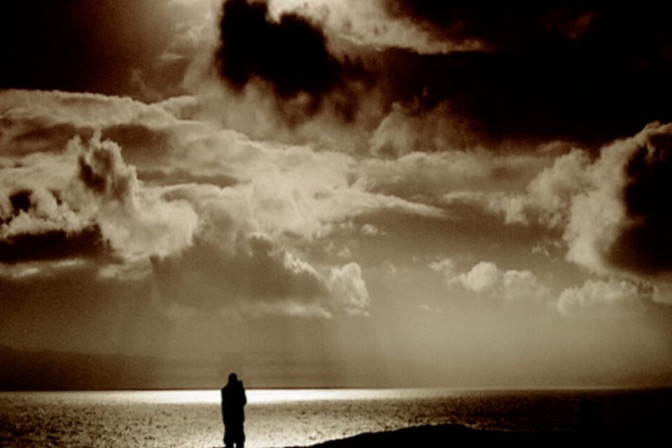Marina Abramović (b. 1946, Belgrade, Serbia) and Ulay (Frank Uwe Laysiepen, b. 1943 – d. 2020, Solingen, Germany) are two of the most renowned names in the history of performance art. Their collaboration, which began in 1976, is one of the most influential and intense partnerships in the art world. Their shared body of work, marked by its exploration of physical and psychological endurance, gender roles, and the boundaries between life and art, continues to resonate across disciplines.
The programme Video and Performance: Marina Abramović and Ulay showcases several of the couple’s seminal performance works, offering audiences a glimpse into the conceptual and emotional intensity of their collaborations. Their performances often blurred the line between art and life, with their bodies becoming the primary site for experimentation and struggle.
In AAA-AAA, performed in Liège, Belgium, Marina Abramović and Ulay screamed at each other without an audience, exploring the dynamics of their personal relationship through performance. The performance is a continuation of Abramović’s earlier work, Freeing the Voice (1976), in which she shouted herself hoarse in an act of physical purging. However, AAA-AAA was specifically focused on the psychological and emotional tension between the two. The performance, originally filmed in Amsterdam by Louis van Gasteren, was later repeated in the studio a year after its creation, serving as both an action and a documentation of their relationship.
Relation in Time took place at Studio G7 in Bologna, Italy, and forms part of the That Self series. In this piece, Abramović and Ulay were bound together by their hair, each facing in a different direction. The two sat in silence for sixteen hours before the audience was invited to witness the final hour of the performance. The work is a meditation on the interdependence of male and female energies, and how the interaction between the two forces creates a third entity, the “self.” Influenced by John Cage’s idea of “activity within inactivity,” the performance examined both physical and mental stamina as the artists sought equilibrium between body, mind, and gender. This piece engaged with concepts of polarity and sought to create an androgynous figure through the interaction of the two bodies.
One of their most iconic works, Breathing In / Breathing Out explores the theme of life and death, both metaphorically and literally. The performance was recorded in Belgrade in April 1977. Abramović and Ulay were connected by their mouths, sharing breaths for nearly twenty minutes, with no access to external oxygen. The act of breath-sharing symbolized the union of two lives and their ultimate destruction as they collapsed from exhaustion. This work delves into the collapse of the “self” within collaborative efforts, offering a visceral and dangerous meditation on the limits of endurance.
Filmed at Filmstudio Amsterdam, Rest Energy is a striking performance from the That Self series. In this piece, the artists drew a large bow and arrow, each holding one end. The arrow was pointed directly at Abramović’s heart, creating intense physical and emotional tension. The rapid beats of their hearts and their irregular breathing, amplified by microphones on their bodies, underscored the life-threatening tension between them. After four minutes, the bow was dropped, symbolizing the precariousness of their collaboration, as well as the fine line between danger and control.
The Lovers: Great Wall Walk is perhaps their most famous and profound performance, symbolizing both the culmination and the separation of their relationship. In March 1988, the couple began their separate journeys from opposite ends of the Great Wall of China, a monumental project in which they would walk toward each other and meet in the middle. They intended to marry at the point where they met. This dramatic performance, spanning the Great Wall—referred to as the Sleeping Dragon—became a poignant metaphor for their relationship. The project was not only about distance and endurance but also about reconciliation and the end of their artistic partnership. It is both a physical odyssey and an emotional exploration of connection, separation, and identity.
Through Video and Performance: Marina Abramović and Ulay, audiences are invited to witness the raw emotional power and physical extremities of the legendary duo’s performances. Their works remain a testament to the profound ways in which art, life, and love intersect, and to their unrelenting pursuit of artistic truth through the limits of the human body.
Marina Abramović is considered a pioneering figure in performance art, often referred to as the “grandmother of performance art.” She began her career in the 1970s and, over the decades, has become known for her intense and sometimes controversial work that pushes the limits of the body and mind. Her performances often deal with themes of endurance, risk, and self-exploration, while also engaging with the relationship between performer and audience. Abramović’s 2017 retrospective The Cleaner was a major exhibition shown at the Moderna Museet in Stockholm and the Louisiana Museum of Modern Art in Denmark, among other institutions.
Ulay (1943–2020) was a German artist best known for his groundbreaking work in photography and performance art. He became an international figure in the late 1960s with his innovative Polaroid photography before collaborating with Abramović in the 1970s. Together, they produced some of the most famous works in the history of performance art, exploring deep emotional and physical themes. His work often addressed politics, gender, and identity. In 2016, the Schirn Kunsthalle in Frankfurt, Germany, held the first major retrospective of Ulay’s work, titled Ulay Life-Sized.
Video and Performance: Marina Abramović and Ulay was curated by Film and Video Umbrella and supported by Arts Council England. The program offers a comprehensive look into the groundbreaking collaborations between Abramović and Ulay, highlighting their commitment to exploring extreme limits and pushing the boundaries of performance art. Their works continue to influence and inspire contemporary artists across disciplines, remaining iconic examples of performance as both an artistic and a life-altering practice.









